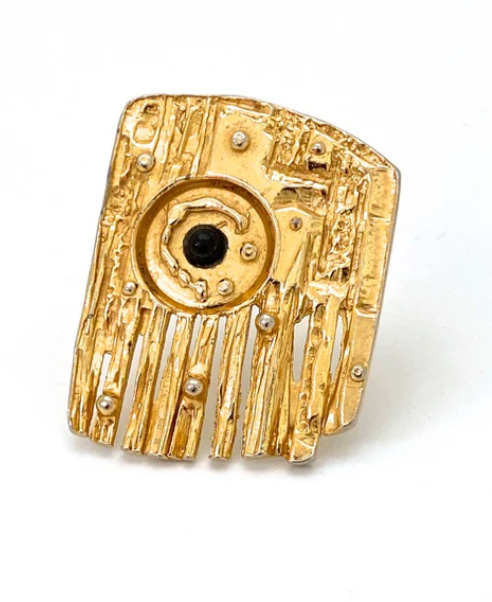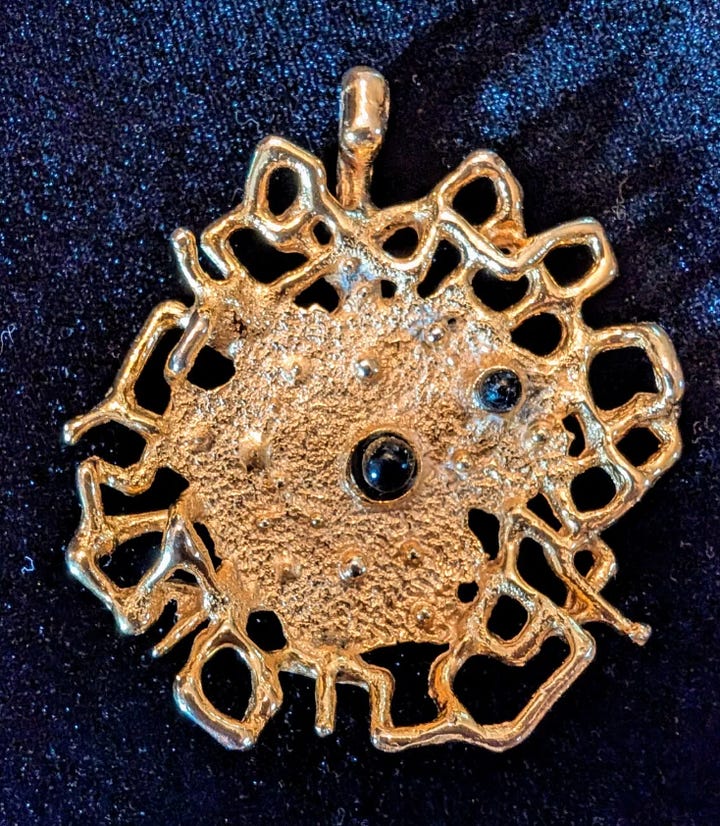David Yurman Began as a Brutalist Jeweler
Plus: A wave of talented jewelry designers (in Canada!) embraced Brutalism in the 1970s. Now their pieces are highly collectible.
Before the 2024 movie The Brutalist was released—chronicling the life of a fictitious architect—the term “brutalist” was bandied about in design circles, but was far from ubiquitous. Now we know all about the Brutalist movement, courtesy of Adrian Brody (thanks, bruh): Brutalism is a style of architecture that emphasizes function over ornamentation and uses raw materials, most notably concrete. It was popular in the U.S. in the 1960s and ’70s, and examples of the architectural style are all over Washington D.C. and Boston, among other U.S. cities. Brutalism always looks, well, brutal: chunky, hulking, maybe cerebral, and often rustic.
In that same era, jewelry artists (not mass-production professionals, but folks hammering away at metal on their benches) also turned out Brutalist designs full of pitiless forms and worn-in patinas. Brutalism in jewelry was legitimately subversive; it looked and felt like the polar opposite of the gemstone-set ladylike jewels of the 1950s.
Jewelry star David Yurman, who was an artist and sculptor before pivoting to jewelry, was a Brutalist in the beginning. Check out this necklace he made for wife Sybil Yurman, one of his earliest designs. It’s so brutalist:
Here’s another early David Yurman necklace (how good is that “chain?”):
While Yurman was turning out bold brass pieces in New York City, a group of Canadian jewelry artists were casting pieces in pewter, copper, brass, and silver that embraced Brutalist signatures—a dearth of decoration, hyper-textured patinas, and organic forms.
Among them was Robert Larin, a Montreal-based artist who worked from 1968-1972, creating abstract Brutalist forms in a variety of metals, but mostly pewter.


Another Canadian jeweler working in the style in the 1970s was Gilles (known as Guy) Vidal, whose work was a little more refined-feeling, and less edgy, than Larin’s:
Lastly, Rafael Alfandary—another Canadian—created Brutalist kinetic designs in hammered copper and brass, sometimes set with brightly colored cabochons. Alfandary is my personal favorite of the three, and was arguably the most influential. How many times have you seen necklaces similar to the ones below in Southwestern-flavored gift shops spanning from the Berkshires to Berkley, California?












Scary but lovely.